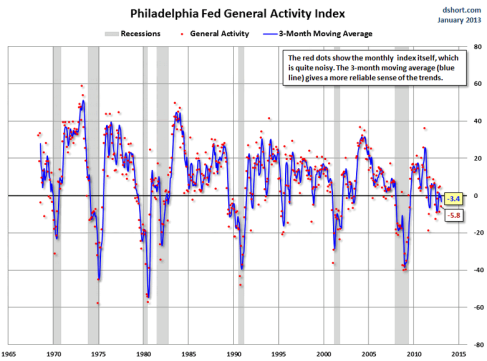The average active manager is now leveraged long, according to NAAIM’s weekly survey:

Sustained bullishness is bearish, especially once the market starts to trend sideways. We don’t yet have that choppy sideways action on declining RSI that has been a death knell for rallies, but sooner or later it will emerge. If the market starts sidedays, this would complete the most bearish syndrome possible, though we already have a market that is overbought and overvalued, with overbullish sentiment and rising bond yields (John Hussman’s bearish syndrome that has nailed most major tops for decades).
In economic news, Q4’s negative GDP print supports the thesis that we entered a recession in the 2nd half of 2012, as leading indicators had been suggesting for months. It also comes right as the Citi Economic Surprise Index is again on the downward slope of its regular cycle, meaning surprises are more likely to be to the downside.




